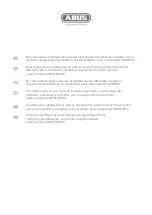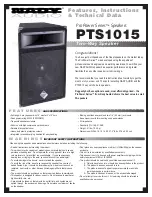
| 121
Appendices |
V90S User Manual
2020
161.600
161.600
S
TELEPHONE
2078
161.525
161.525
S
TELEPHONE
2079
161.575
161.575
S
TELEPHONE
Editorial note: The note numbering below is provisional and will be
aligned during final preparations of the new edition of the Radio
Regulations.
Notes referring to the Table
General notes:
a) Administrations may designate frequencies in the inter-ship, port
operations and ship movement services for use by light aircraft
and helicopters to communicate with ships or participating coast
stations in predominantly maritime support operations under the
conditions specified in Nos.
51.69
,
51.73
,
51.74
,
51.75
,
51.76
,
51.77
and
51.78
. However, the use of the channels which are shared with
public correspondence shall be subject to prior agreement between
interested and affected administrations.
b) The channels of the present Appendix, with the exception of
channels 06, 13, 15, 16, 17, 70, 75 and 76, may also be used for
high-speed data and facsimile transmissions,subject to special
arrangement between interested and affected administrations.
c) The channels of the present Appendix, with the exception of
channels 06, 13, 15, 16, 17, 70, 75 and 76, may be used for direct-
printing telegraphy and data transmission, subject to special
arrangement between interested and affected administrations.
(WRC-12)
d) The frequencies in this table may also be used for radio
communications on inland waterways in accordance with the
conditions specified in No.
5.226
.
e) Administrations may apply 12.5 kHz channel interleaving on a non-
interference basis to 25 kHz channels, in accordance with the most
recent version of Recommendation ITU-R M.1084,provided:
•
it shall not affect the 25 kHz channels of the present Appendix
maritime mobile distress and safety, automatic identification
system (AIS), and data exchange frequencies, especially the
channels 06, 13, 15, 16, 17, 70, AIS 1 and AIS 2, nor the technical
characteristics set forth in Recommendation ITU-R M.489-2 for
those channels;














































